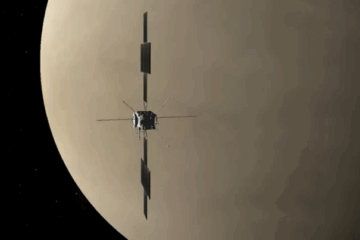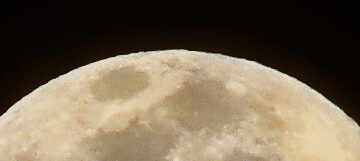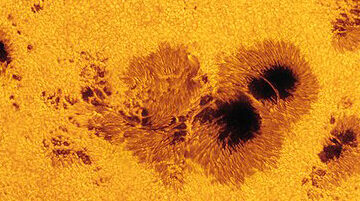Cruising with an asteroid
Hayabusa2 – to land or not to land?
When the Sun’s family formed 4½ billion years ago, there was a lot of extra material remaining. Much of it was left from the nebula of gas and dust that formed the Sun and planets. Some of it probably came from a planet made up of rock and metal that broke apart. The former nebular material in the deep reaches of the solar system became comets, and the fragments of the shattered planet are known today as asteroids. Studying both of these types of solar system “leftovers” helps us understand its history.
Only in recent years have astronomers been able to get close-up images of asteroids, even visiting some of them via unmanned spacecraft performing two types of missions. The first are flybys, where an asteroid is photographed much closer than would be possible from Earth while the spacecraft passes by. The other type of asteroid encounter is to actually try landing on one of these small worlds, collecting material and images, and then bringing them back to Earth.
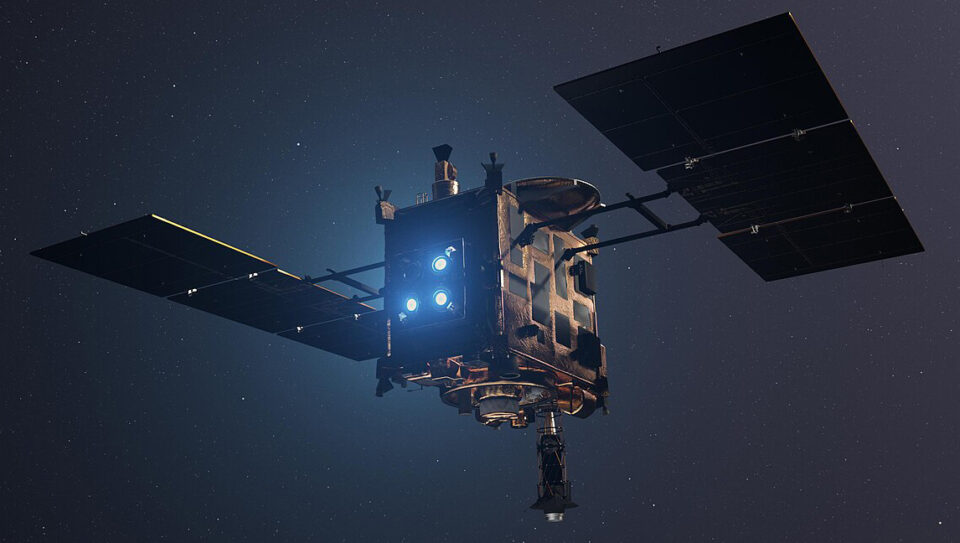
Such was the case with Japan’s Hayabusa2, which visited asteroid 162173 Ryugu in June 2018. In this artist’s impression we see the spacecraft firing its three solar-electric ion thrusters and a pair of extended solar panels – just what you’d expect from a space probe. What’s unusual is the tube-like “snorkel” hanging down beneath it. This is what touches the asteroid’s surface to collect loose samples of its material.
Hayabusa2 measured the 900-metre-wide Ryugu, collected physical samples from its surface, and returned them to scientists on Earth in a special capsule in December 2020. The recovered samples contained organic compounds such as uracil, which is found in both RNA (along with adenine, cytosine, and guanine) and vitamin B3.
However, this wasn’t the end of Hayabusa2’s mission. There was enough propellant onboard to extend it, and the spacecraft is now set to make a high-speed flyby of asteroid 98943 Torifune in July 2026. Hayabusa2’s camera is fixed in one position and therefore not designed to track an object during such a fast passage. Still, scientists will take what data they can get.
After that, the sample return mission will continue for a rendezvous with asteroid 1998 KY26 in July 2031. There may be a potential problem when it comes to collecting samples, for two newly discovered reasons. This small body is truly tiny – only 11 metres in diameter, about a third of what was originally estimated. Making things even more challenging, it rotates once every five minutes instead of every ten as first expected. If it had indeed been 30 metres across and rotated every ten minutes, a landing and sample collection might well have been feasible.
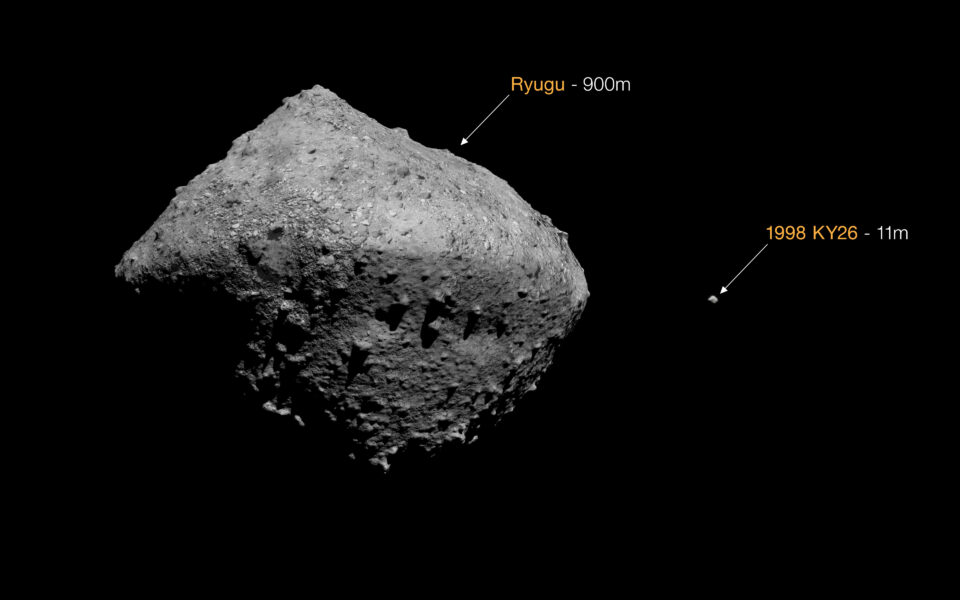
Here we see the two asteroids side by side for comparison. On the left, Ryugu – already sampled. On the right, the much smaller 1998 KY26. This illustration shows just how difficult it will be to try to land on the latter in July 2031.
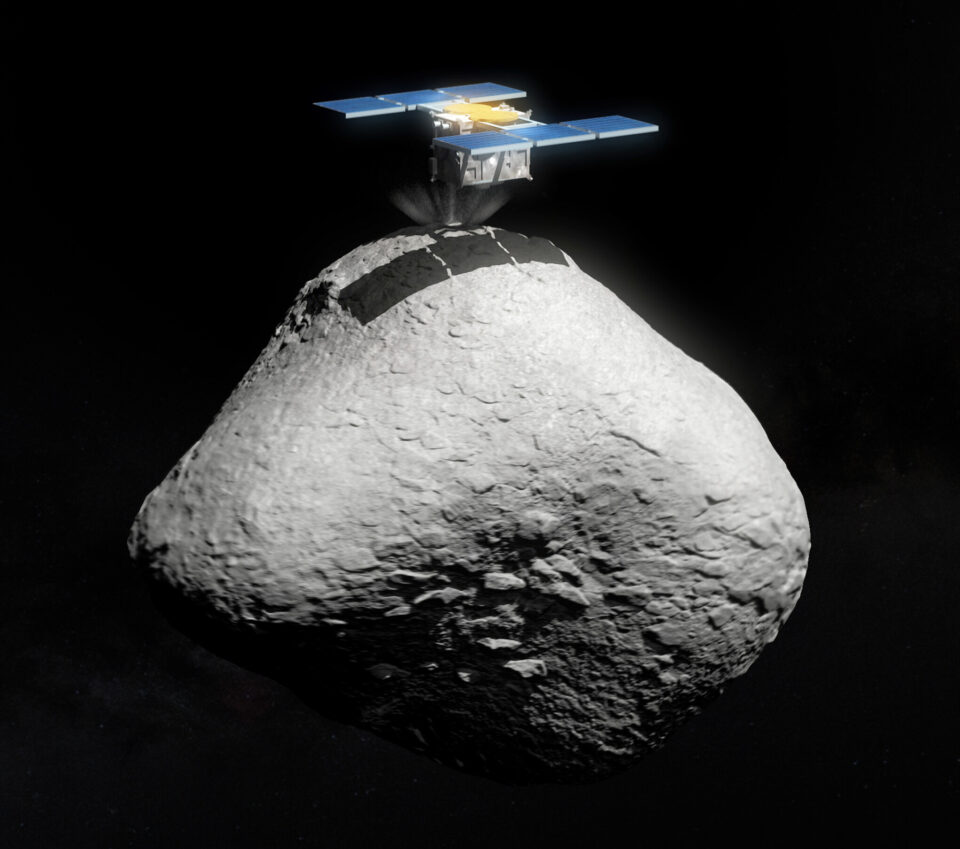
If Hayabusa2 were somehow able to land on this mini-asteroid, it might look like this in this artist’s impression of the event. Based on this picture, and using your imagination while comparing it with the previous one, you can picture the probe perched atop 1998 KY26.
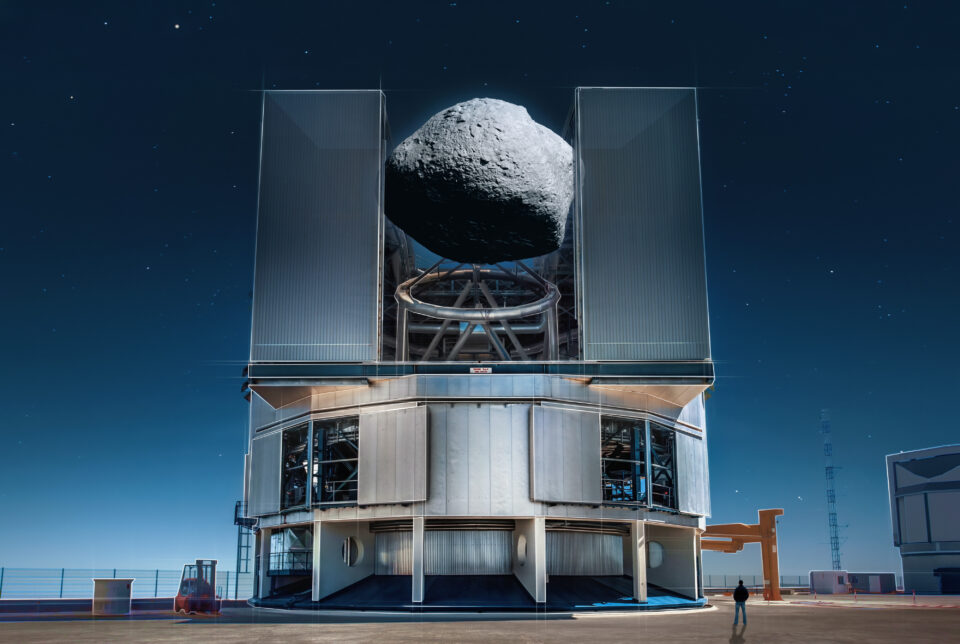
To illustrate just how small this asteroid is, this artist’s impression, based on ESO’s VLT telescope observations, shows 1998 KY26 to scale. Most of you have a sense of how long a one-metre measuring stick is – lay eleven of them in a row on the ground, and you have the approximate diameter of this asteroid.
Unless something unexpected happens, Hayabusa2 will pass by Torifune in July 2026 – one object passing another – hopefully taking a few photos along the way. Whether the spacecraft will be able to attempt a landing on 1998 KY26 to take a sample remains to be seen. Perhaps a very quick “touch and go” will ultimately be the solution. Further observations between now and July 2031 may determine whether to land – or not.
For more information, follow this link o the ESO press release, which includes both pictures and a video.
By: Tom Callen

